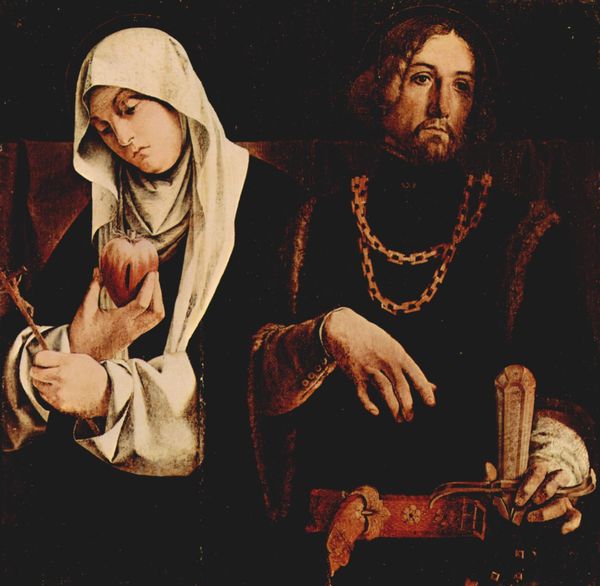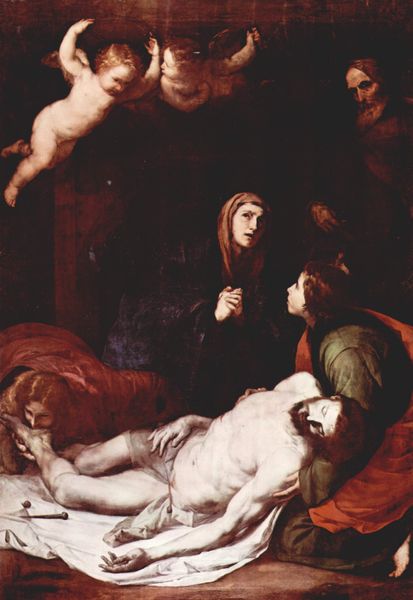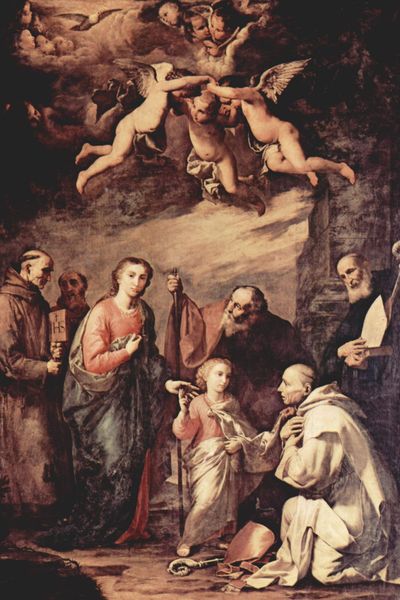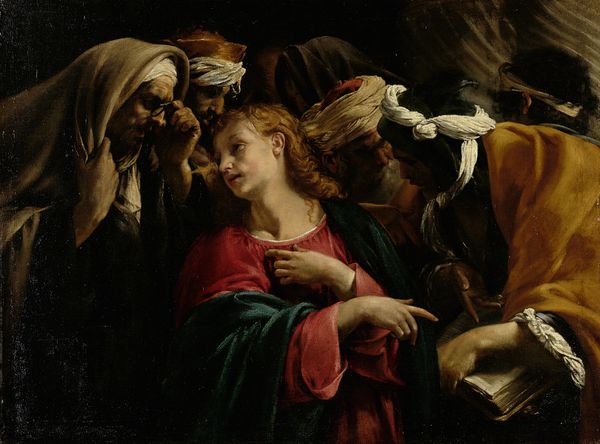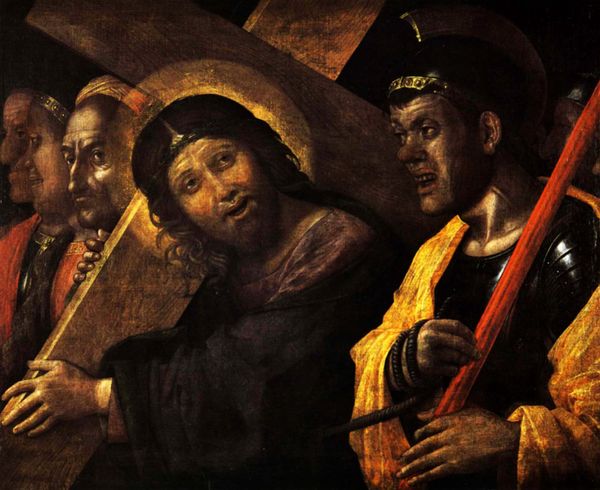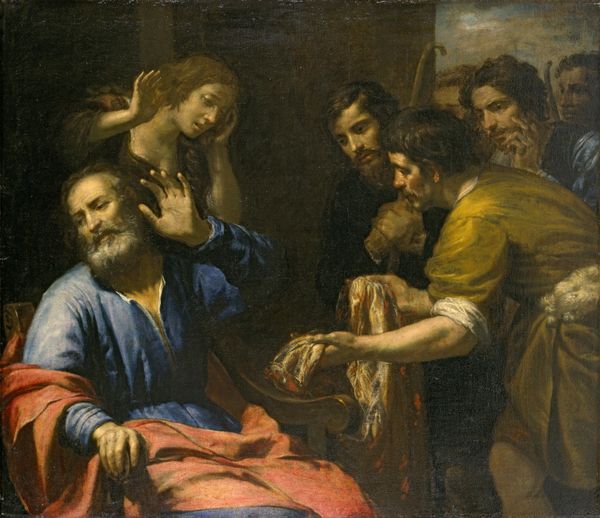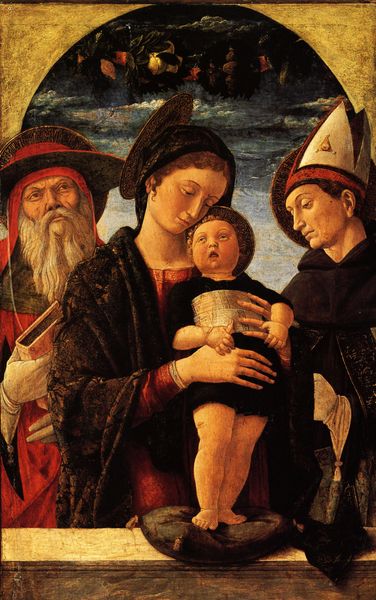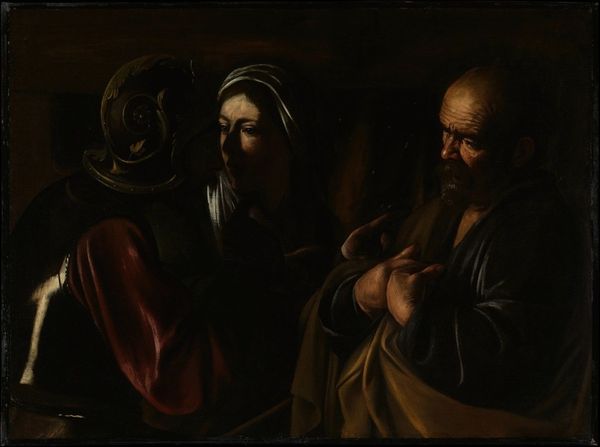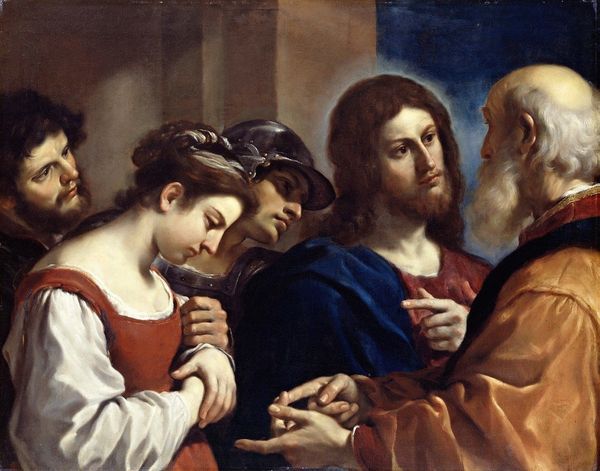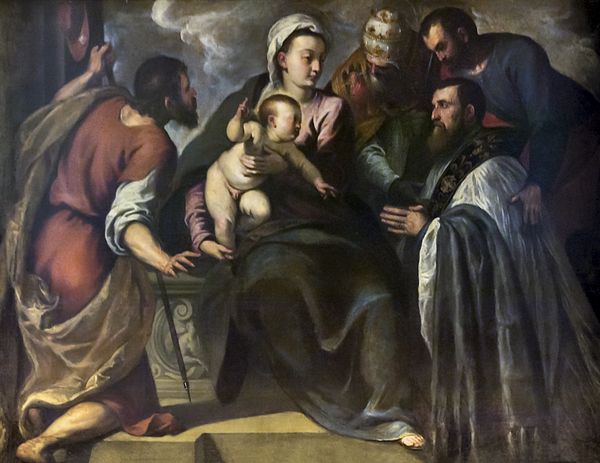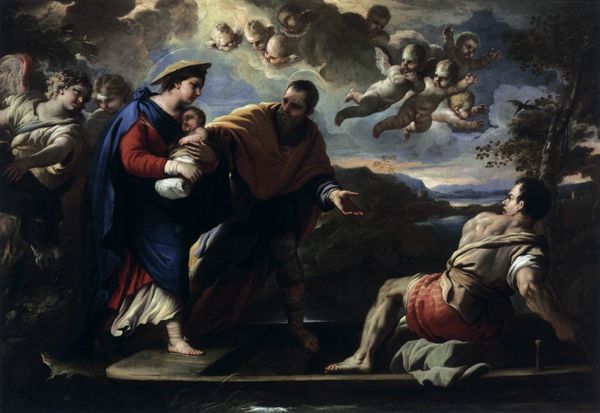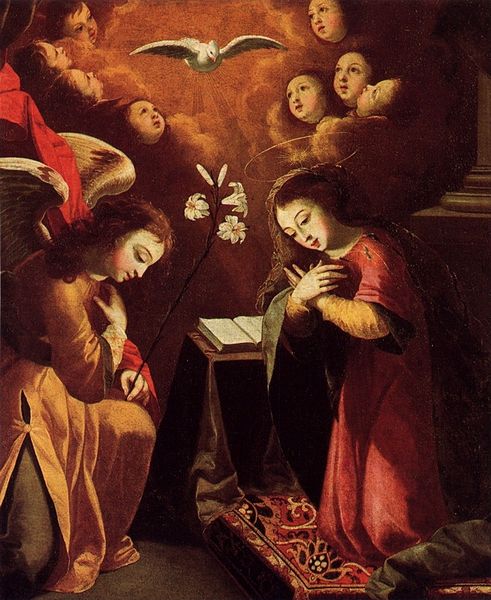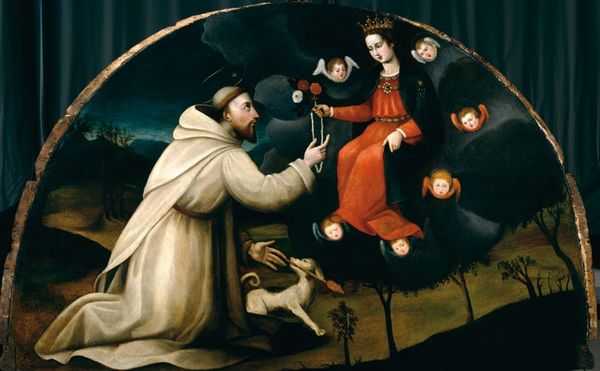
oil-paint
#
portrait
#
allegory
#
baroque
#
oil-paint
#
momento-mori
#
chiaroscuro
#
christianity
#
history-painting
#
angel
#
christ
Dimensions: 129 x 98 cm
Copyright: Public domain
Curator: This is Jusepe de Ribera's "Vision of St. Francis of Assisi," created in 1638. It's currently housed in the Museo del Prado in Madrid. What's your immediate reaction to this scene? Editor: Bleak. The heavy shadows just swallow everything. There’s something both theatrical and deeply private about it at the same time. Curator: The Baroque masters like Ribera frequently employed tenebrism, or dramatic illumination, for heightened emotional effect. Here, the stark contrast draws your eye to the three key symbols: St. Francis, the angel, and of course, the skull. We might also reflect on Francis as a sign, in himself. Editor: And the angel holding an hourglass—talk about unsubtle! That symbolism of time slipping away, leading to the inevitable... it's classic "memento mori", and it taps into a deep-seated human fear. Is Ribera playing on popular anxieties, or expressing personal beliefs? Curator: It’s a clever weaving of both. Saint Francis himself, who embraced poverty and identified with the suffering of Christ, embodies a radical kind of humility, or, if you like, *kenosis*. The skull becomes not just a symbol of death, but also a prompt for a spiritual re-centering. He is offered knowledge through contemplation on these signs. Editor: So the painting becomes almost a meditation tool for the viewer as well? But how would this function in its original context? Would people be so familiar with the allegories that this all was immediately grasped, and what role would that have on their piety or their emotional response? Curator: Absolutely. In 17th century Spain, where the Church held enormous cultural power, and, in many ways *was* the culture, imagery of this sort acted as both comfort and as directive. There’s also a sense of dramatic reveal, which, in visual terms, echoed theatrical presentations used by the Jesuits in this period. Editor: The politics of imagery—powerful stuff. It makes you think about the control that institutions sought to wield over their audiences through the art they commissioned. Even today, it impacts how we respond. Curator: Precisely. And to appreciate it now is to reflect not just on artistic skill or personal expression, but the complex and lasting relationships between art, faith, and the wider culture. Editor: A timely reminder of art's layered histories and continued influence, I would say. Thanks for that.
Comments
No comments
Be the first to comment and join the conversation on the ultimate creative platform.
